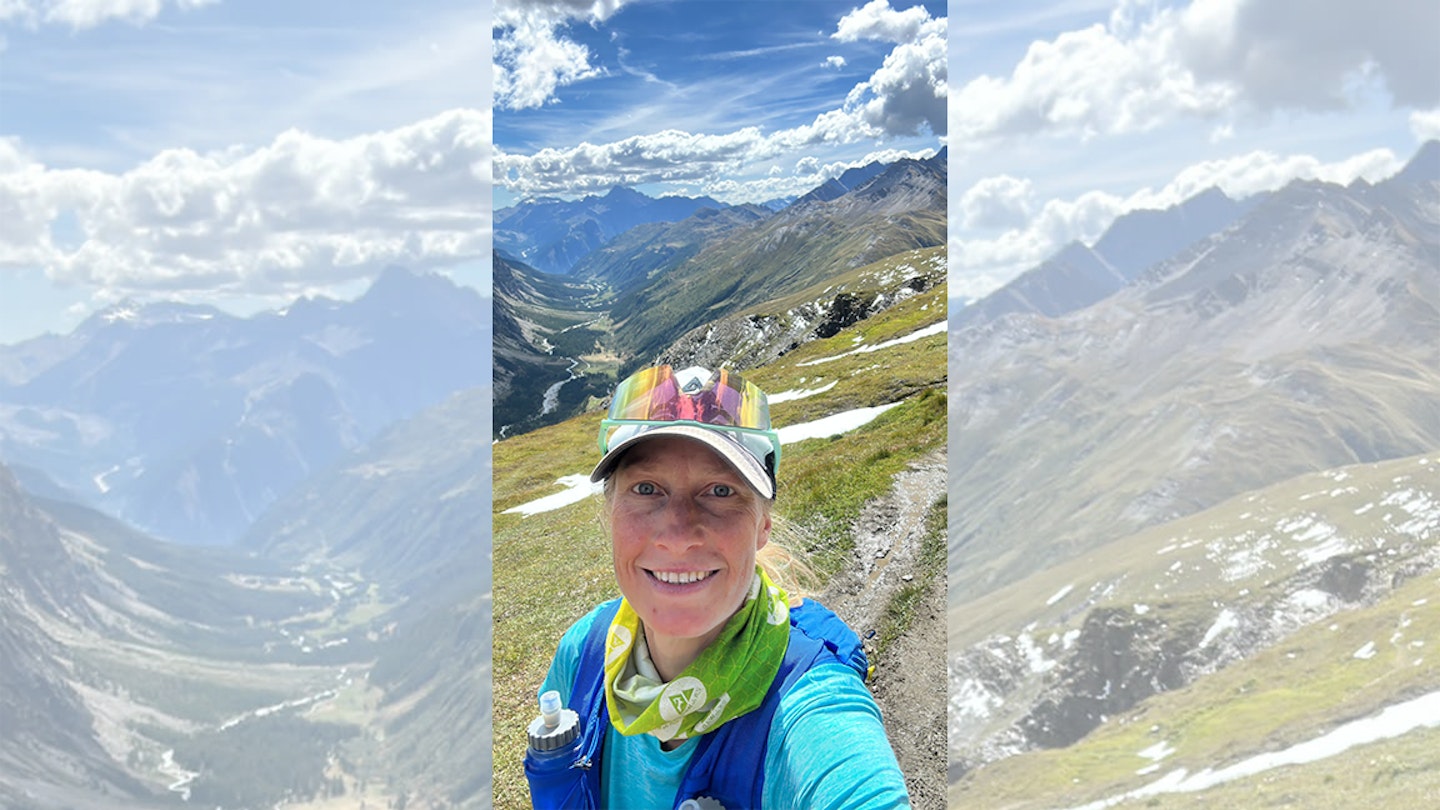The CCC, named to simply describe its passage from Courmayeur via Champex-Lac to Chamonix, is a 100km, 6000m elevation race that essentially takes in much of the second half of the Tour du Mont Blanc long-distance hiking trail.
The CCC is part of the Ultra Trail du Mont Blanc trail running race series that takes place every year in Chamonix, which is widely considered the most competitive ultra trail competitions in the world (see who won the UTMB this year). Run the Wild coach Karin Voller shares her experience of taking on the CCC challenge this year, and what what you can expect of the race.
Having lived out near Chamonix each summer for the last nine years, and having completed the full Tour du Mont Blanc (171km) running over the course of six days, I am no stranger to either the terrain, the conditions, or the sheer gravity of the CCC run. I have completed numerous ultras in the past, including the multi-day Marathon Des Sables, the Pilgrims Ridgeway Challenge, and the 87km Rose of the Shires events. I tend to favour low-key events. You know, the ones that have little hype and that allow me to embrace one of my favourite aspects of running - just being out in nature and enjoying the sights along the way.
Why should you run the CCC?
At Run the Wild our tagline is ‘Exploring places… not running races’, and whilst I live by this mantra 99% of the time, there is no doubt some benefit to sometimes testing yourself on a marked course. The 'why' is always quite hard to put into words, but I am a believer of just seeing what we can do. That's why I've done numerous self-motivated and self-created challenges, such as running Hadrian’s Wall over three days and running the 50-mile Chilterns Heritage Trail. I don’t need to have a race to see what I can do, but sometimes the logistical help is a big advantage, and also races do bring out the best in us, whether we like to admit it or not.
How do you train for the CCC?
As a running coach, I am perhaps more acutely aware of the deficiencies in my own running and therefore, leading up to the CCC I made a huge effort to work towards a training plan that pushed me outside of my comfort zone. There are sessions we all like and dislike, depending on our running personalities, but it's important to understand these, accept them, and then try and do something about them.
For example, if you are a morning runner but know your event involves afternoon, evening or night running, you simply have to make some of your training sessions during these harder parts of the day. If you are a cool weather runner, but are taking on an event which could be warm, again ensure you sometimes train when its hot, regardless of the discomfort.
For me, I am definitely a morning runner, and I also like to get all my climbs front-loaded on a run, meaning I like to get them out the way before the going gets too tough! The reality is the CCC has numerous climbs spread out throughout the run, so my training was focussed around best replicating the race profile over shorter distances, and doing some of these runs in the evening and even during the night. I also get very nervous racing, so again, I ensured some warm-up races were part of the training. Pushing outside of our comfort zone is something we all need to do sometimes.
It's also important to accept that for most of us, running will always play a minor role versus other aspects in our lives. This isn’t an excuse, but its something that needs to be acknowledged whenever we sign up to a challenge. This may be in the form of work or family commitments along the way, but very few people can dedicate quite as much of themselves to a training program than intended. This is ok, but also means your expectations need to be realistic.
Training had gone well for me, bar a few weeks of reduced volume due to a niggling calf injury. Running distances of 50-miles plus each week places a huge strain on the body, so you need to learn to listen to your body. Especially when it comes to what you should train through, and what you shouldn’t. I’m a big believer in seeing the physio when the pain scale is such that it really interferes with your training, and having regular sports massages to help alleviate soreness.
Strength and conditioning work is hugely neglected, but definitely helps with injury prevention. What 's also beneficial is just generally looking after yourself (easily neglected) with regards to nutrition and rest. My longest training runs were marathon distance (I did three of these). While I had also intended to do some back-to-back long days, life interference meant I never really managed to get out for them. Back-to-back runs are a really good way of simulating running while fatigued, while avoiding the strain of doing a single huge day at a time.
I don’t recommend a 3am alarm the day before you are going to race yourself, which is what happened in my case. But again, sometimes life just happens that way, and there is no point stressing about what can’t be changed. The reason for my early start the day before my race was that my partner Simon was running the OCC (55km UTMB race). Dot-watching could be an Olympic sport, and as I watched Simon’s dot climb out of Orsieres, heading towards Champex, I quickly realised that any chance of getting back to sleep was zero.
Rather than just see Simon cross the finish line, I decided he may appreciate a little boost at Argentiere (about 14km from the finish), so we headed there for a three hour wait with the dogs. Crewing and supporting is definitely more stressful than racing. It’s a lot of hurry up and wait. Did I miss them? Are they going ok? Why aren’t they here yet? When Si appeared, he was having a tough day, but there was no chance of him quitting, so a quick cuddle with the dogs and he was off for his last climb to Flegere and then final descent into Chamonix.
Race day
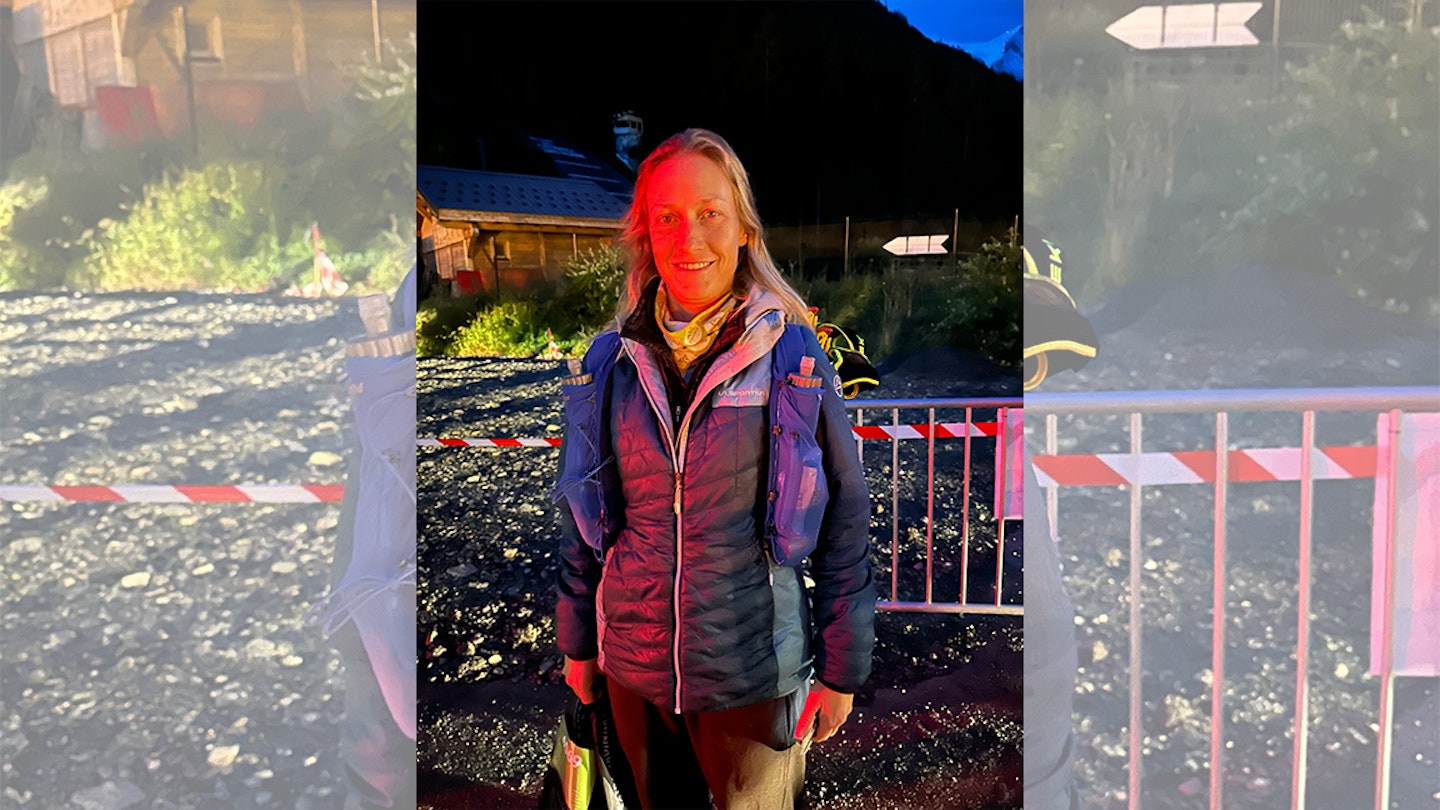
The next day the alarm goes off again before 4am, so I can ready myself before having to catch the bus from Chamonix to Courmayeur in Italy for the start of the CCC. I know my own body well enough to know I need at least an hour to prepare pre-run to not feel stressed. Am I drinking enough? AmI drinking too much? Have I had enough breakfast to give me energy?
All of this had been practised plenty of times before race day, but it's still amazing how we second-guess ourselves. Then we travel to Chamonix and onwards via bus to Courmayeur, where runners are dropped about a 15-minute walk from the start line. I pack up my drop bag to be taken back to Chamonix, put on my extra layers that would be in my pack for the run itself, and then make my way to the start area.
I had read a few blogs about the CCC who mentioned that the first climb (1400m) can become a bit of a single-file march if you don’t push ahead in the first section of the climb, which is road and quad track before hitting a steeper single track portion. However, it's quite intimidating to consider ‘pushing ahead’ in the first 4km of a 100km race.
The countdown begins
I wait in the wave two area, which is due to start 15-minutes after the first wave - a nod to trying to space out the field before the climb. The music, the crowds, the people around you who look like they regularly pump out 5-minute miles, all plays havoc with your mindset. I find myself with stifling apprehension. Stay calm.
Nothing for it now but wait it out... 3-2-1 and we're off! As expected, the surge is strong, and I find myself being passed by many runners on the flat loop through Courmayeur centre. I don't mind this though, I know full well what's to come.
Within 1km you turn off the main high street, just after the iconic church, and the gradient becomes significantly more serious. The constant tap tap tap of running poles on tarmac surrounds me. I do use poles, but dislike both the sound and sensation of using poles on tarmac, so have mine stored away for the time being.
Many start to walk, but I maintain a steady, slow jog. My mantra is generally to run everything I can run, and then walk when I can’t run. One weakness I know that I have is that I'm a slow uphill hiker. As soon as I start walking, others seem to pass me as if I'm stationary, but on the other hand I can continue running over reasonably steep gradients. The jury is out on, at what gradient it's more efficient to walk than run, but we certainly weren’t in that territory yet!
Let the climbing commence
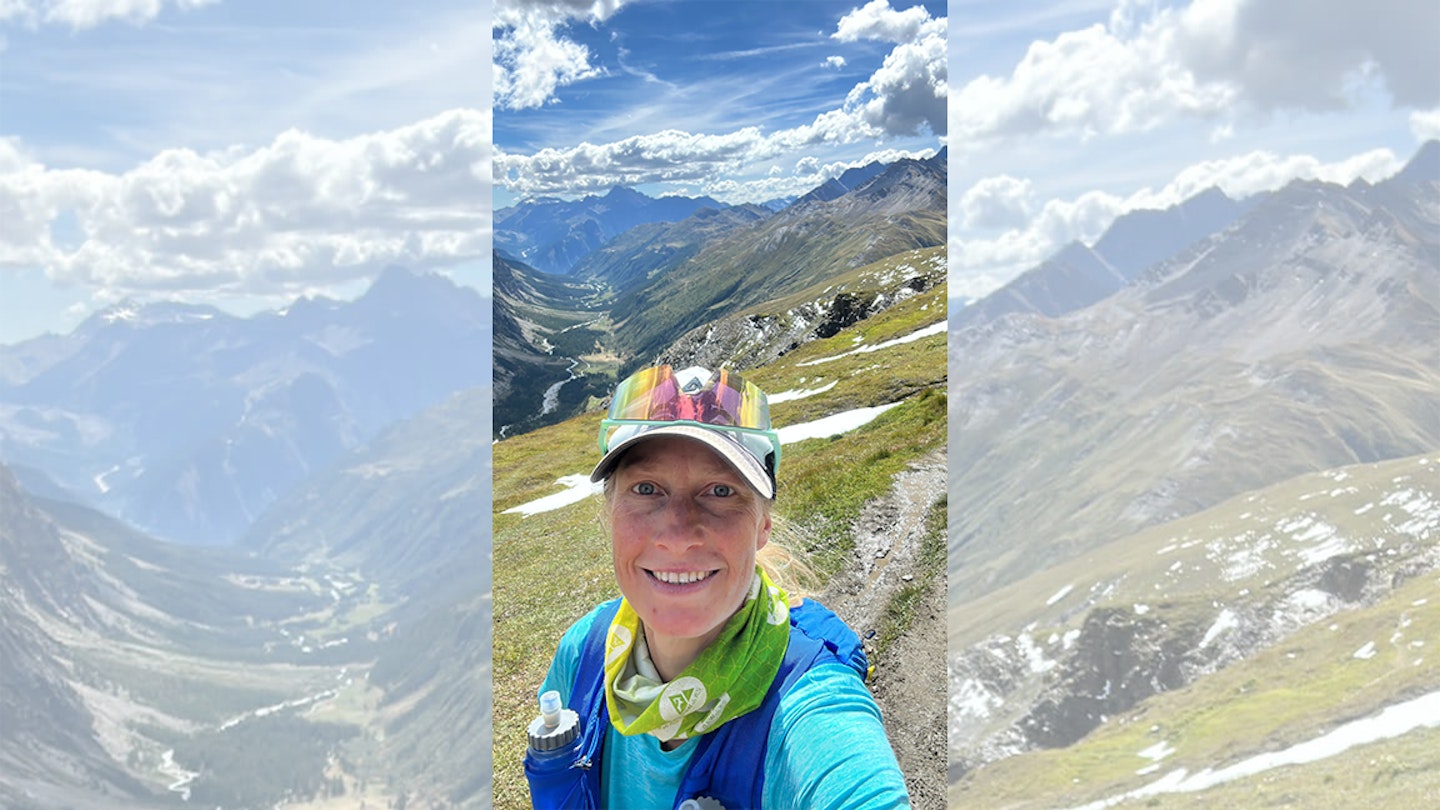
Tarmac becomes gravel quad track, and eventually after a small river crossing, the route develops into a single track at around 4km. I have to say I feel some real relief when the pace slows around me, as the queue of runners begins its procession up through the forest. It's switchback after switchback here, I whip out my poles for the first time. There are moments when I'm stationary due to the large number of runners and narrowness of the path, but I had accepted this was possible beforehand, so it didn't stress me unduly. Instead, I use the time to chat to other runners around me, quickly finding one with whom I shared a common friend. It's a small world in trail running.
The path winds up and around the woods above Courmayeur, towards the Col du Sapin, and eventually opens up to a much steeper final ascent above the treeline. I find my rhythm and place in the pack, and the runners around me settle down. I'm a bit surprised at the lack of ‘banter’ between runners. Perhaps it was nerves, perhaps it was language, perhaps it was competitive spirit, but I always find it a shame when runners don’t embrace the shared adventure and camaraderie of running.
I even have one lady come past me, who I stepped off the trail for (polite, but unnecessary in race situation where we were going fairly similar speeds), and immediately find myself being speared by her running poles as she swung them back. No word of apology.
Summit
I reach the first summit and timing point at the Tete de la Tronche, after almost exactly two hours. I'm thrilled. Though I'd done this section in about the same time during my recce, I'd guesstimated it could take me an additional hour with the queues. This first climb is the biggest of the whole course, and means by extension that 25% of the total ascent is done within the first 9% of the distance.
Poles away and the descent starts. The sweeping descent down to Refugio Bertone is a real joy with epic views. Numerous runners pass me on this section, perhaps they'd been held up in the single-track queue, but it's a little discerning to lose so many places on the first descent.
At Bertone I refuelled, took in some cheese, dried meat, coke, and refilled my water. Now the traverse along the Val Ferret commences. This is also a nice, undulating path, with plenty of passing spaces. I settle into running all flats and downs, and walking the ups. We finally drop down to Arnouvaz at 25km, the first opportunity for a bathroom stop.
Poor race planning
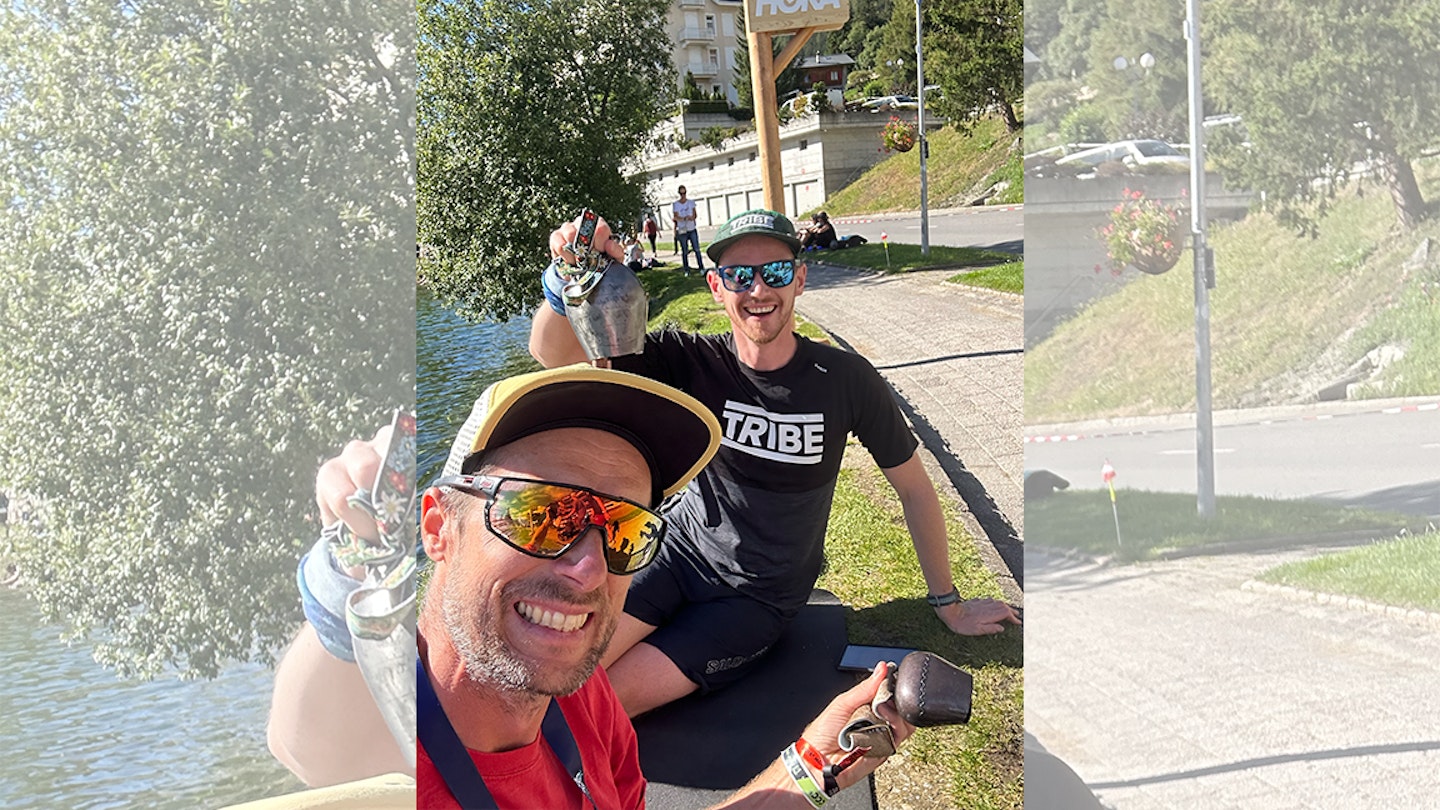
If I had one criticism for the UTMB organisation and its continual efforts to get more female runners in their events, not having toilets for those first 25km is a slightly poor show. The route so far had either been too barren to maintain dignity, or too steep for safety to be able to take a comfort break near the race footpath. Frustratingly, I have to queue for over 10 minutes for the toilet here, as it seems the curse of the runners’ trots has afflicted several unlucky souls. This means there's only one toilet being used in rotation, while the other four house those struggling with stomach issues. The consequence for me is that I don't really have time to refuel here. With a lot still left to run, I'm raring to get going again.
From Arnouvaz, the climb up to the highest point enroute the Grand Col Ferret, begins. This is a magnificent climb. It's open, beautiful, savagely steep in some sections, and runnable in others. We even climb all the way up to the snowline, making the path sludgy and muddy in places. I'm not cold though. It's actually a relief to climb to cooler heights as we now pass into in the hottest part of the day. I had scoped out the route enough to know that after this col, there is 20km of pretty much all downhill. If that doesn’t help you get up a climb, I don’t know what will!
The course was starting to claim victims by this point. Whether they had gone out too fast, were affected by the heat, or simply hadn’t done sufficient training on sustained climbs, I don’t know, but I felt lucky to feel fairly strong. From the Col, poles went away again, and the descent to La Fouly begins.
Speeding into La Fouly
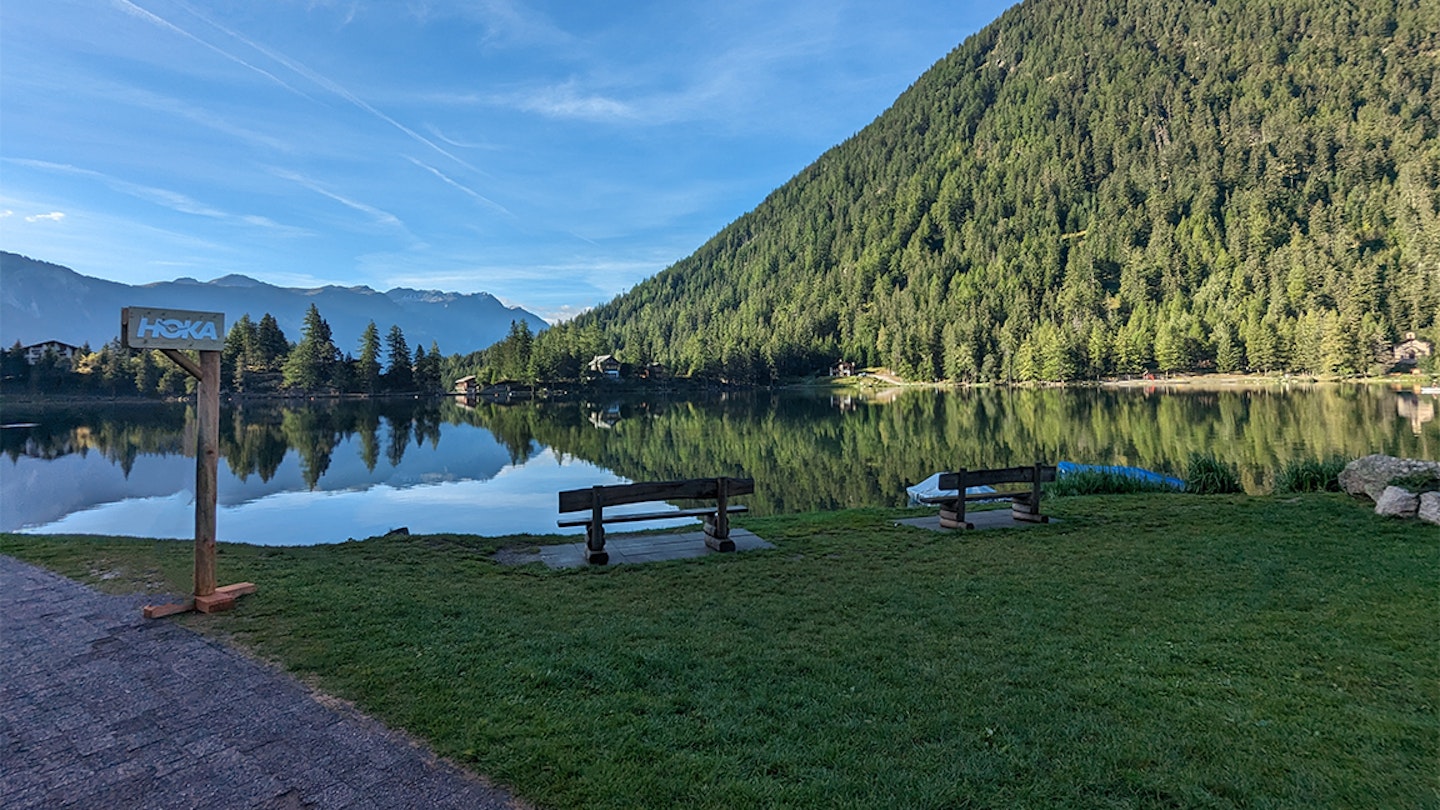
I knew this would be the fastest section of the course and one where I could make time. Others around me are definitely holding back, but I feel confident with my shoes, the strength in my legs, and my ability to not trash my quads on the descent.
I chat to a fellow female runner and just before La Fouly, I catch up with a British chap who's struggling a bit in the heat. By this point, the aid station at La Fouly is only a short distance away, so I tell him to just hang on in there with me into the checkpoint, where he'll be able to refuel and dip his hat in water to cool down. It seems to work, and we jog in together.
Out of La Fouly and another 4km descent before the climb up to Champex-Lac begins. I'm starting to feel excited now at the prospect of seeing Si in Champex - the first place where outside assistance is allowed. It's also the first major point that's over halfway in the race. Somewhat strangely (to me), Champex is the biggest drop out point on the route, with over 200 runners withdrawing in this section, out of a total of 578 for the whole course.
Refuelling at Champex-Lac
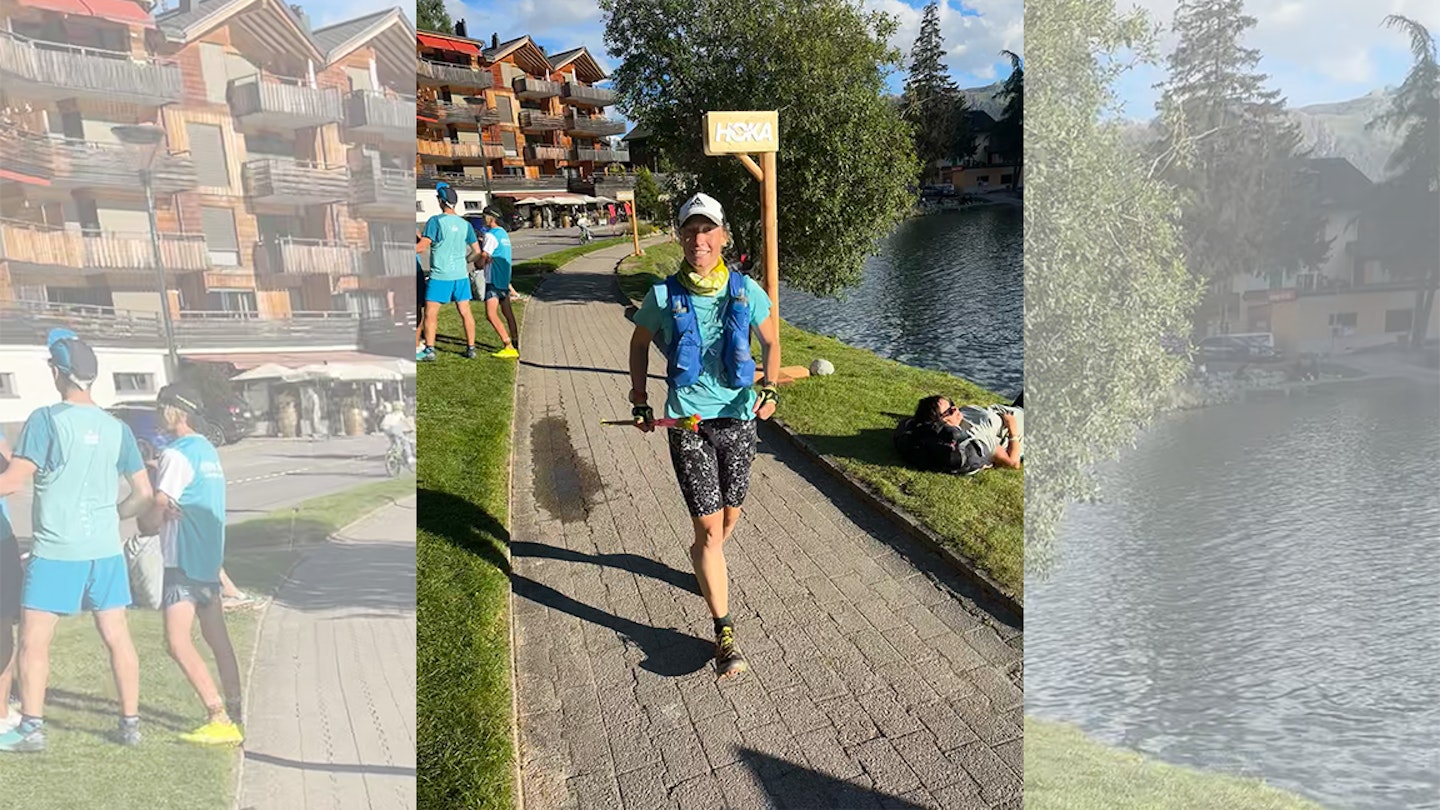
The Swiss village of Champex has become a bit of a crowd favourite for many reasons. It’s a beautiful spot on the lake and the weather is glorious today, with cowbells ringing loud, and as a family friendly spot, there are loads of children getting involved. The atmosphere is fantastic, and seeing Si gives me a huge boost.
Crisps, some pain au raisin, some coke - what a treat! Si was a bit concerned I wasn’t taking on enough fuel, but at this stage in an ultra, it's pretty hard keeping much food down. It’s a constant battle between getting energy, and avoiding nausea, so I managed what I could. Within five minutes, I was off again.
The climb from Champex is pretty meaningful. It takes you about 1000m up above Bovine, before descending into Col du Forclaz and then Trient. I've started to adopt a run for a count of 10, then walk for a count of 10 strategy up Bovine, which seems to be paying off.
It starts to get dark as I descend into Trient, the last village before we cross back over to French soil. I should really get my headtorch out here. But not wanting to waste time (and knowing Si was in Trient), I use the light on my phone for the final section of the descent.
Farewell Switzerland

In Trient, there's another buzzing party atmosphere, though the aid station looks a bit more like a field hospital in a war zone! The combined smells of deep heat, food, sweat, and some more questionable whiffs, gave me no inclination to hang aorund. Si helps me with my headtorch, stowing my cap and glasses in the back of my pack, and I'm off within a few minutes.
I know the climb out of Trient is going to be tough, brutal in fact. It' super steep, and every time I look up, it feels as if the trail of headtorches from the runners in front of me are impossibly high and far on the trail. I generally like running at night. The simplicity of just following a small circle of light, the knowledge that the rest of the world is starting to settle into their homes, there is just something quite magical.
The attrition of runners becomes increasingly real. It feels like every few moments I'm asking a trail runner sat at the edge of the path if they are okay, or need some help. Just one foot in front of the other, chip chip chip, keep at it, and eventually you'll get there.
Finally, the route flattens off and then starts to drop downwards. I know this means that Vallorcine is in my sights! I'm really starting to catch runners here. Vallorcine's the last point to see Si before the two final climbs, then eventual drop into Chamonix. I decide to change out my head torch battery, just to make sure my torch would last into the finish. Si is full of praise for how I'm doing, piling me high with crisps, which is about the only thing I can stomach by now.
Final push
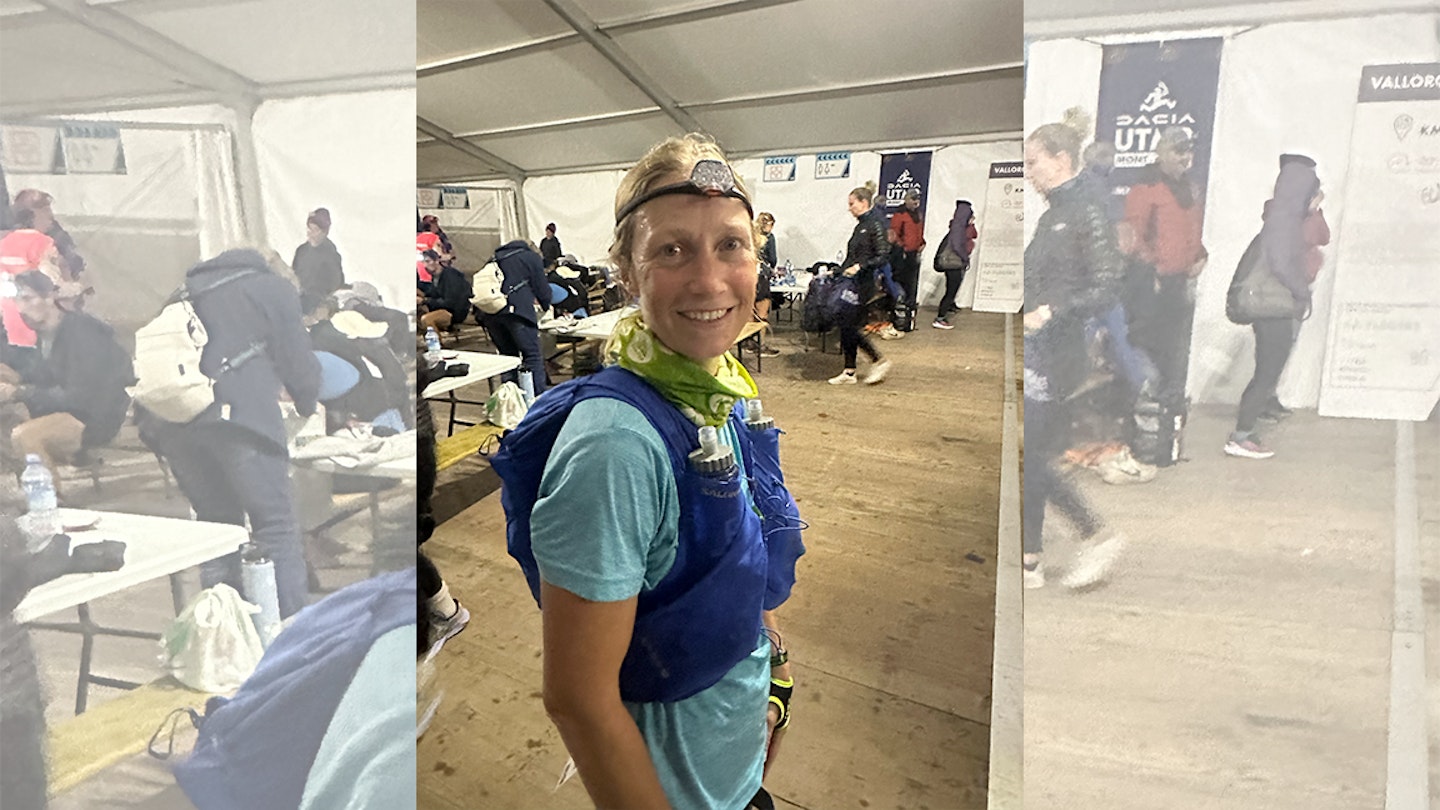
The slope starts out gentle out of Vallorcine, and again I adopt a run/walk. After crossing the road into the Aguile Rouge, the ascent to Aguillette d’Argentiere (a small route change from the usual climb to Flegere) begins. On the map this climb looks innocent, but it's anything but. The climbing seems to go on forever.
However, the descent's even worse. Gnarly roots, huge rock steps, and a long, long route down. My pace is almost as slow on the descent as it was on the climb. It's absolutely unrunnable, and even though my quads feel alright, the continual huge steps start to take their toll. I hear others around me crying out at the pain of impact on each huge step down.
After a few choice words grumbled to myself about the route, I'm finally back climbing towards Flegere. In stark comparison from where I've come, the path is lovely. Runnable flatter sections, a short climb, then more runnable flat sections. Before long, I'm out on the ski slopes and hiking upwards once more. But it's for the last time, and knowing this, I settle into a strong march.
Chamonix is calling
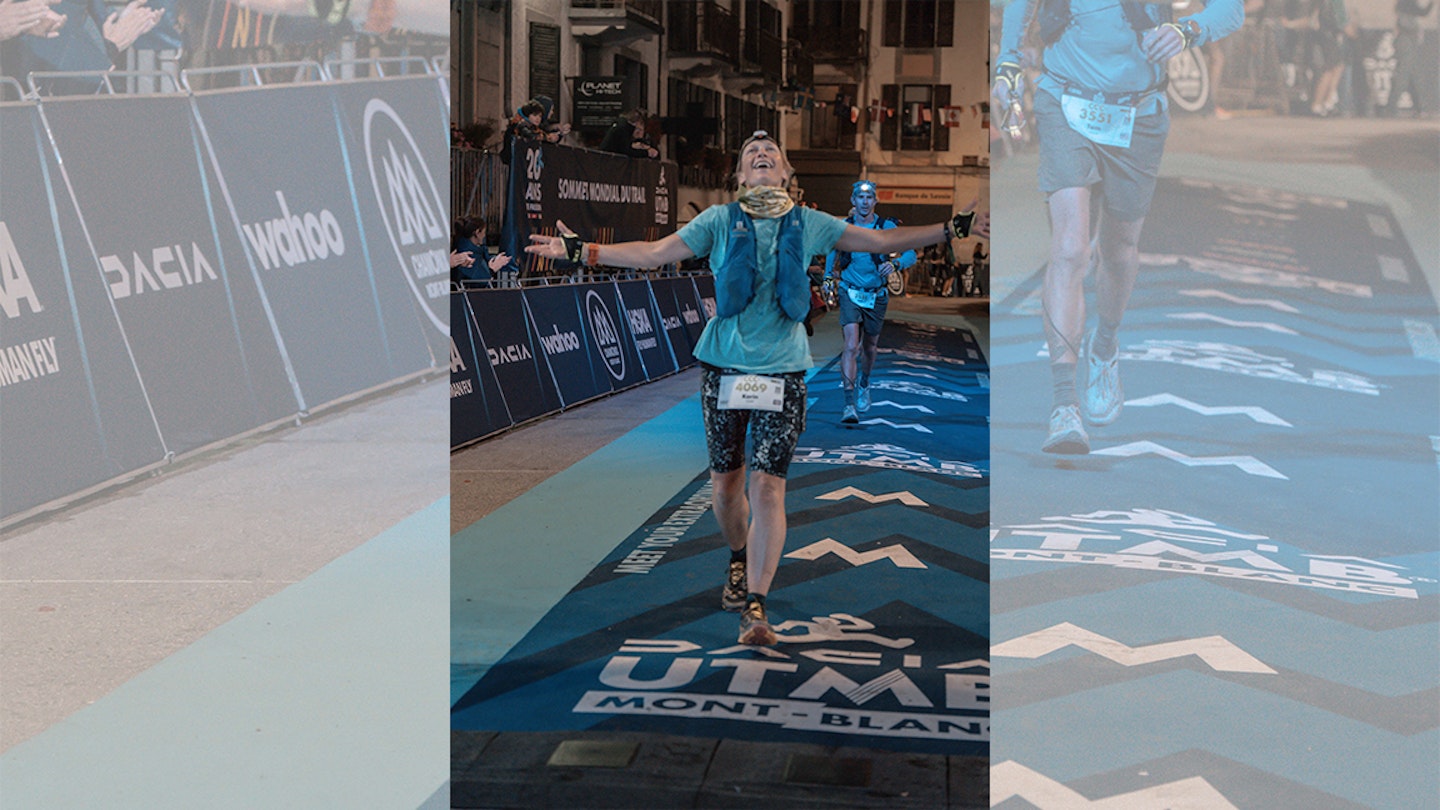
Before long, the final aid station comes into sight. I can't and won't ever understand why so many runners seem to be hanging around here. Its 8km of almost all downhill into the finish, yet some runners are taking a leisurely break here. As for me, it's a quick slosh of coke, and refill of just one bottle, before heading out into the night once more.
All concept of time has completely alluded me by this stage. Only one thing was certain in my mind, I had this in the bag. The final descent is quite technical, at least to La Floria, at which point the rocky steps become less steep and ankle breaking, and the path widens.
Finally, the bridge over the road to Chamonix centre appears, and I hit the river path leading me homeward. At this point, it's all about getting to the finish as fast as you can and getting it done. Finishing at 2.30am means the crowds aren’t at their peak, and to be honest, it seems like half of the people cheering have just had a few too many at a bar. But either way, I lapped up the final kilometre into town.
Down the high street, round the corner, and then the finishing straight lined by alpine buildings adorned with flags finally comes into view. Si steps through from the crowd and starts to run alongside me, as well as my best friend Anna holding my two dogs, our friend David, and our local pals Neil and Dan. Surrounded by my personal support crew, it's hard to not get emotional.
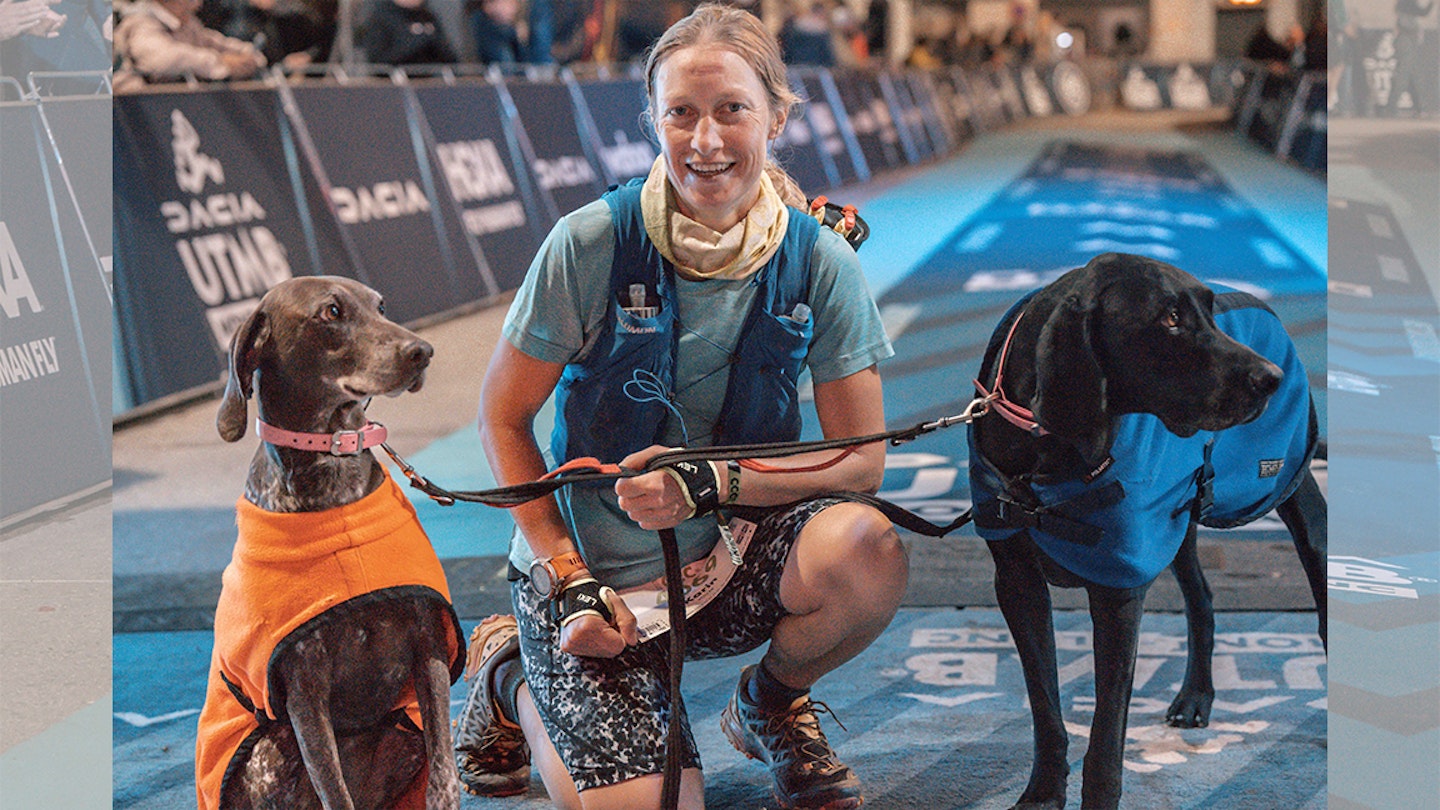
Crossing that line, I didn’t know whether to laugh or cry. I’m still not quite sure to be honest! I finished in a time of 17hrs 12min, after having ran 101km with over 6000m of elevation. That nervous sunrise start from Courmayeur felt like a million years ago. All that mattered now - I was done.
I was thrilled to be in the top 300 overall out of over 2200 that started the race. The reality is however that this isn’t a race against others, at least not for runners like myself who are never coming close to a podium. It’s a challenge against one’s mental and physical strength. Against one's ability to over come the nausea and running in the dark, as well as all the training sessions when you just didn’t feel like running.
At Run the Wild we always preach the virtues of exploring places not running races, but that doesn’t mean that every now and again we shouldn’t test ourselves. We sometimes succeed, we sometimes fail. But one thing's for certain, if you never try you will never know.
